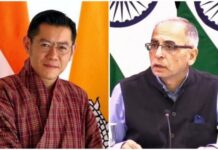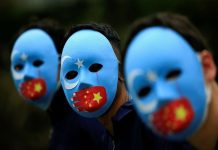Russia, the United States and China have all built new facilities and dug new tunnels at their nuclear test sites in recent years, satellite images obtained exclusively by CNN show.
This comes at a time when tensions between the three major nuclear powers have risen to their highest in decades.
Though there is no evidence to suggest that Russia, the US or China is preparing for an imminent nuclear test, the images, obtained and provided by a prominent analyst in military nonproliferation studies, illustrate recent expansions at three nuclear test sites compared with just a few years ago.
One is operated by China in the far western region of Xinjiang, one by Russia in an Arctic Ocean archipelago, and another in the US in the Nevada desert.
The satellite images from the past three to five years show new tunnels under mountains, new roads and storage facilities, as well as increased vehicle traffic coming in and out of the sites, said Jeffrey Lewis, a professor at the James Martin Center for Nonproliferation Studies at the Middlebury Institute of International Studies, as per CNN.
“There are really a lot of hints that we’re seeing that suggest Russia, China and the United States might resume nuclear testing,” he said, something none of those countries have done since underground nuclear testing was banned by the 1996 Comprehensive Nuclear Test Ban Treaty. China and the US signed the treaty, but they haven’t ratified it.
Retired US Air Force Colonel Cedric Leighton, a former intelligence analyst, reviewed the images of the three powers’ nuclear sites and came to a similar conclusion.
“It’s very clear that all three countries, Russia, China and the United States have invested a great deal of time, effort and money in not only modernizing their nuclear arsenals but also in preparing the types of activities that would be required for a test,” he said.
Though Moscow has ratified the treaty, Russian President Vladimir Putin in February said he would order a test, if the US moves first, adding that “no one should have dangerous illusions that global strategic parity can be destroyed.”
The expansions risk sparking a race to modernize nuclear weapons testing infrastructure at a time of deep mistrust between Washington and the two authoritarian governments, analysts said, though the idea of actual armed conflict is not considered imminent.
“The threat from nuclear testing is from the degree to which it accelerates the growing arms race between the United States on one hand, and Russia and China on the other,” Lewis said. “The consequences of that are that we spend vast sums of money, even though we don’t get any safer.

































